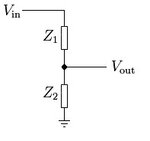T
treez
Guest
Regarding capacitive dropper LED lights that run off 230VAC. What is the maximum power that they tend to run to?
Follow along with the video below to see how to install our site as a web app on your home screen.
Note: This feature may not be available in some browsers.
Regarding capacitive dropper LED lights that run off 230VAC. What is the maximum power that they tend to run to?
yes I will bring it.....as you know, I am speaking of adding a capacitive impedance to the mains current.....so that I can run current off the mains without much dissipation, as caps don't dissipate much as you know....specially if they are film caps of poly type .
